Our guide on medication management provides valuable tips and tools that can elevate the performance of any medication management program. Read the guide below or enter your email to download your copy to take on the go.
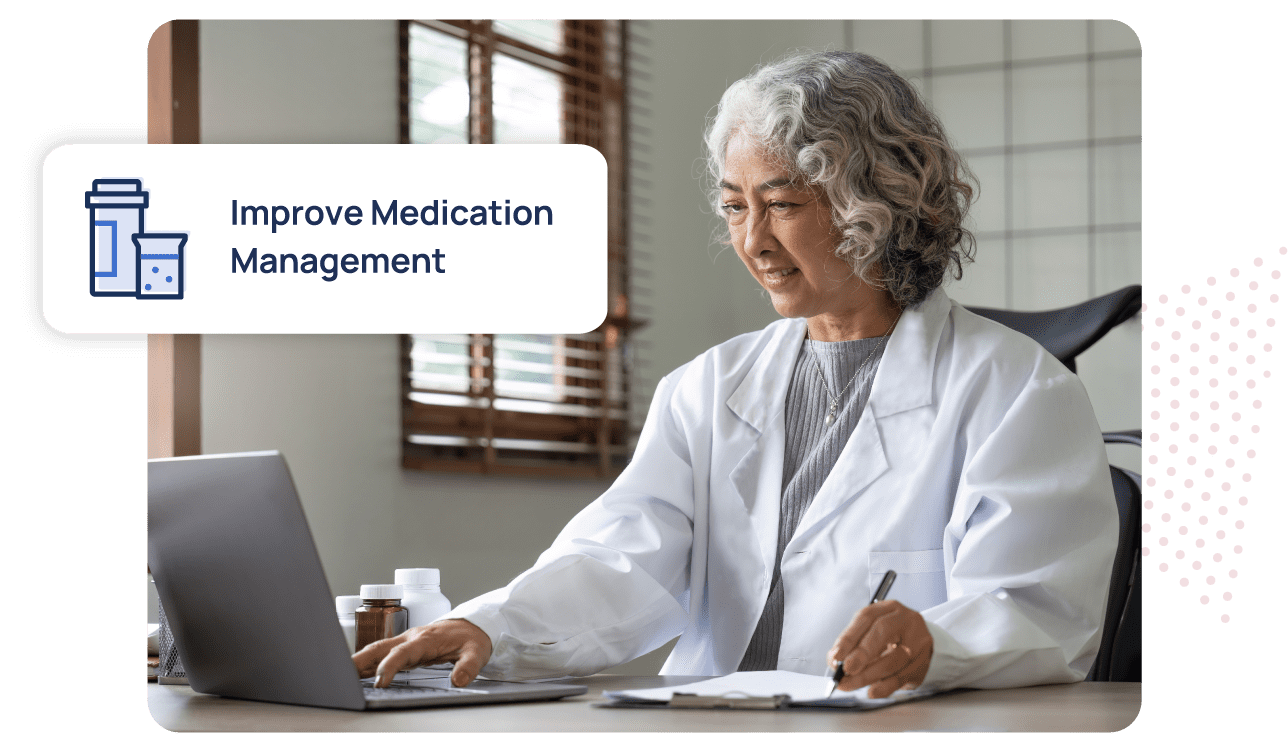
Not many days pass without new reports of frightening stories on medication errors that could — and should — have been avoided. In a best-case scenario, patients manage to escape no worse for wear, the error is identified, and steps are taken to reduce the likelihood of the error happening again. But concerning medication errors, the best-case scenario is often not the actual scenario. Medication errors frequently lead to significant harm to patients and are caused by systemic flaws that may not have simple solutions.
Statistics reveal the danger and frequency of medication errors:
Deaths caused by medical errors per year
Of adults have experienced a medical error
The estimated annual cost of measurable medical errors that harmed patients in 2008
Medicare patients experience a medical error in hospitals
Doctors reported a major medical error
The percentage of medical errors that involve newly graduated registered nurses with less than a year of experience in patient care.
These figures demonstrate just how important it is for payers and providers to prioritize medication management. This eBook is designed to help you develop a new medication management program or improve an existing program. It includes guidance on an extensive range of medication management-related matters and provides valuable tips and tools that can elevate the performance of medication management programs.
When a medication management program is firing on all cylinders, the benefits are evident and significant, including reduced readmissions and medical costs, improved quality ratings (e.g., Medicare Stars, HEDIS), increased patient safety, and greater achievement of health goals. Leverage the resources in this eBook as part of your ongoing efforts to enhance the overall delivery of care for patients and members. Even the smallest of improvements is likely to have wide-reaching, positive clinical and financial effects.
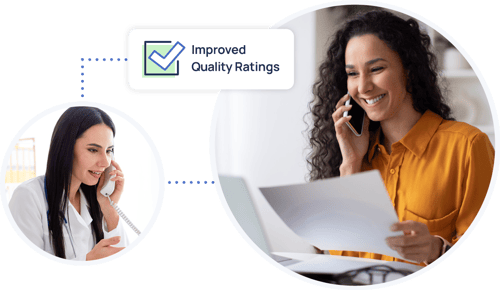

Chapter 1
There’s no question that medications are incredibly important for treating patients with acute and chronic conditions. However, with approximately 50% of patients taking medications incorrectly, it’s vital that hospitals and clinicians consistently follow best practices. This helps ensure patients take their medications the right way so their health can improve or, at the very least, they can better manage their condition.
Medication management is a service to help patients manage their medications so they take them as prescribed, and avoid the adverse effects associated with incorrect medication administration.
Some best medication management practices to consider implementing in your facility include the following:
A critical aspect of successful medication management is medication adherence. If patients are failing to take their medication as directed, the medication management process loses significant value.
To put patients in the best possible position for successful medication adherence, here are a few tips to follow:
To put your clinicians in a better position to help patients improve adherence, follow these tips.
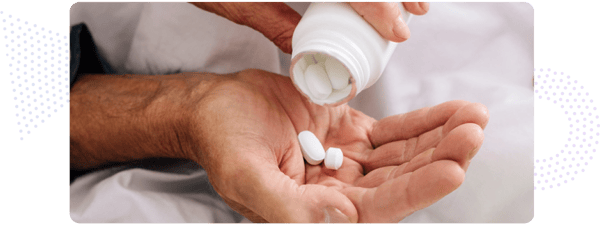
Chapter 2
Statistics show that every minute, around three Americans call a poison control center because they’ve made a mistake with their medication. Patient education is vital to reduce the frequency of these errors.
There are a few key areas to focus on when sharing vital information about medications:
Furthermore, make sure patients understand the crucial role they play in their own care. While education is of the utmost importance if a patient doesn’t understand how to put that knowledge into action, your efforts to help them will likely come up short.
Clinicians help patients in a number of ways, including diagnosing conditions, providing treatments, recommending services, and prescribing medications. However, clinicians can only do so much when it comes to the action that patients actually take, which is the case with medication management.
To support patients, clinicians can positively influence decisions regarding patient medication management. A few reasons patients often struggle with adherence include:
This is the capacity for individuals to obtain, process, and understand the basic health information and services required to make proper health decisions. Clinicians should be prepared to assess their patients’ health literacy and support patients with lower literacy using different resources when applicable.
Believe it or not, cost is the most common reason prescriptions go unfilled. Financial challenges often lead patients to delay or skip refilling medications or even rationing medication, which can prove dangerous. It’s for these reasons clinicians should discuss finances with their patients and provide information about how patients can obtain financial assistance, order medications by mail, and take other steps to aid in patients obtaining and affording the medications they need.
Another reason patients often struggle with adherence is a lack of understanding of their prescriptions. This may include the purpose of medication, why it’s necessary, side effects, and how long the medication takes to work. Clinicians must take the time to discuss each medication and the medication’s qualities with patients.
Finally, fear of side effects may also prevent patients from taking or even filling their prescriptions. Clinicians can work to prevent these adherence obstacles by discussing all side effects with patients, and any concerns patients may have with following their medication regimen.
Taking education and medication adherence one step further, there are medication management activities that can support your efforts to help patients stick with their medication regimen.
Finally, we can’t move on from this section until we address an important and particularly vulnerable segment of patients: seniors. Adults 65 and older are at greater risk for medication-related problems. Three main reasons: 1) They are more likely to take multiple medications; 2) They’re more susceptible to side effects; and 3) They are at a higher risk of drug interactions.
While the best practices we’ve already covered can apply to this age group, there are a few additional steps clinicians can take to improve success concerning medication management for seniors.
Before even discussing a medication, clinicians should ensure that patients can properly manage their medication regimen. This might require addressing obstacles such as poor health literacy, declining memory and eyesight, language barriers, and financial stability. Once you’ve determined if there are any potential obstacles, review information such as the medication’s purpose, how the medication should be taken, possible side effects, and other key details.
Cost is increasingly becoming a medication adherence barrier for seniors. Since many seniors live on a tight budget and fixed income, the affordability of prescriptions may hinder medication adherence. Economic instability can force patients to make difficult decisions about their medications, which points to the importance of understanding and factoring in social determinants of health (SDoH) when building a medication management program.
Seniors also tend to take more medications, which increases the complexity of their regimen. When possible, reduce the number of medications and their administration frequency. (Note: Learn more about polypharmacy here.)
While verbal instructions can prove helpful, this type of communication also leaves room for error. As much as possible, clinicians should provide patients with a written list of all current medications and their accompanying information, in addition to other resources that can aid in adherence.
While not all seniors will be comfortable with or even use smart technology, clinicians should take advantage of those that do. A 2021 Pew Research Center survey showed that more than 60% of U.S. adults 65-plus years of age owned a smartphone, so there is an opportunity to effectively leverage this technology comfort level. If your patient is tech-savvy, recommend a medication adherence app that can improve their medication management.
Make sure to review senior patients’ medications regularly. As a patient’s conditions change, a medication prescribed in the past might not be the best option even just a few months later.
Finally, ensure these high-risk patients consistently receive medication reconciliation post-discharge (MRP). Clinical pharmacists, like those with the Cureatr Clinic, bring the knowledge and trustworthiness to support seniors during transitions of care effectively.

Chapter 3
Medication management presents a number of challenges in a hospital setting that can contribute to readmissions. However, when steps are taken to improve the medication management process, hospitals can ultimately reduce medication-related readmissions and ED visits. There are many complexities to consider and overcome in order to accomplish this important objective. Let’s explore a few major challenges.
One in four Americans report difficulty affording their prescription drugs, and one in eight say that they or a family member have rationed doses due to high costs. So, for many patients, you must be aware of how cost could affect their ability even to fill a prescription, let alone take it correctly.
Not only do patients struggle with medication costs, but hospitals also do as well. Rising costs are straining hospital budgets, leading some hospitals to pursue alternative medication therapies to control costs better. Such financial stress can prevent hospitals from making the best clinical decisions and providing the highest quality of care.
A national survey of pharmacists found that nearly all pharmacists were seeing the impact of drug shortages on healthcare delivery. Such shortages, which can also contribute to rising medication costs, may require hospitals to make difficult medication-related decisions, such as finding substitute medications, conserving supplies, producing their own medications in a compounding pharmacy, and determining which patients need medication right away and which patients can safely have treatment delayed.
Medication errors that occur in hospitals present safety risks for patients. While not all mistakes cause harm, many can lead to injury or even death. The challenge is that so many factors can cause a medication error, making it difficult to determine the best ways to prevent mistakes.
To provide the best medication management, clinicians must have access to a patient’s comprehensive medication history. If even one detail of a patient’s medication history is omitted, this could lead to an adverse event.
With every transition between doctors, departments, or facilities, there’s potential for a breakdown to occur. For example, a breakdown can occur if a patient has limited English proficiency or low health literacy and does not follow their treatment plan correctly or a patient or caregiver is excluded from transition planning. These potential breakdowns further point to the importance of providing patients with medication reconciliation post-discharge.
A newer challenge that has emerged in recent years concerns prescribing opioids. This issue requires clinicians to carefully differentiate which patients are showing drug-seeking behavior, which is planning to sell the drugs and those that actually require an opioid prescription.
To help keep patients safe from the challenges noted above, there are several steps organizations can take to protect patients from errors:
Efforts to improve medication management and safety will benefit more than just patients. Better performance concerning various medication-related processes can also strengthen payers’ and providers’ quality ratings.
For example, the Healthcare Effectiveness Data and Information Set (HEDIS®), developed by the National Committee for Quality Assurance (NCQA), includes several measures for health plans that directly or indirectly speak to medication management and safety. Among them:
TRC, MRP, and medication adherence are also crucial for payers looking to improve or maintain their Medicare star ratings performance.
On the provider side, transitions of care, MRP, and medication adherence all play vital roles in helping avoid medication-related complications. Such complications can lead to a significant concern for providers: readmissions.
Poor or increasing readmission rates can greatly impact a hospital’s quality star rating. Gregory Downing, DO, Ph.D., states: “If a hospital experiences a significant increase in readmissions year over year, and generally the star ratings look at three-year time blocks, then CMS could decrease a percentage of its payment to the hospital for subsequent years.”
He goes on to note that focusing on medication management is proven to help improve Medicare star ratings. “We have worked with a hospital system that went from 4 stars to 5 this past year,” Dr. Downing said. “One of the major contributing factors was a care coordination program that reduced readmissions with the help of improved medication management.”
Learn the 7 steps organizations can take to protect patients from the danger of medication errors.

Chapter 4
Another key aspect of medication management is ensuring that medications are administered safely and accurately. As evidenced by the fact that the median error rate of medication administration is 8% - 25%, consider ways you can improve medication administration in your facility.
As mentioned in the previous section, educating patients and caregivers can help prevent medication errors. Discuss each of these areas related to drug interactions with your patients and caregivers:
One specific area of medication management that should not be overlooked is opioid pain management. As a serious problem on the rise, opioids claimed more than 68,000 lives in 2020.
While healthcare organizations should be aware of opioid-related dangers, many patients still require these opioids to manage their pain effectively.
Here are a few initiatives the healthcare industry is undertaking to better manage opioid pain management:
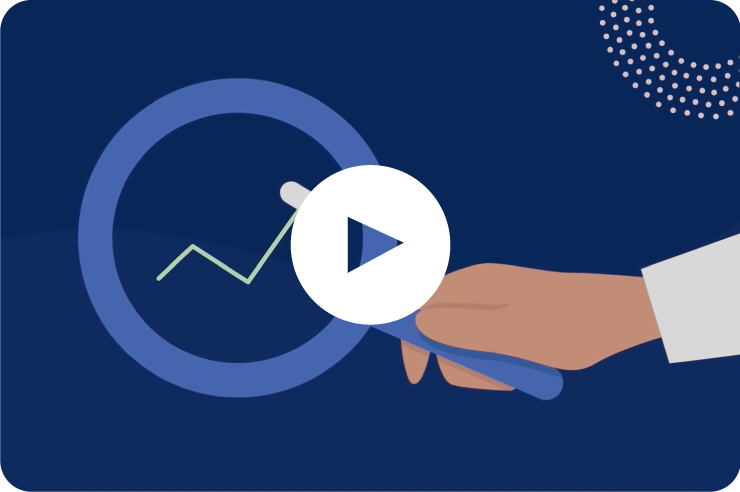
Bringing about positive changes to the components of effective care coordination will ultimately help ensure a more successful med rec process.

Chapter 5
A successful medication management care plan hinges upon collaboration with the patient. Here are some steps you can take to improve the effectiveness of the care plan.
As you prioritize improving medication management in your organization, you can help patients with adherence by offering these services.
This is defined by the American Pharmacists Association as the:
“Systematic process of collecting patient-specific information, assessing medication therapies to identify medication-related problems, developing a prioritized list of medication-related problems, and creating a plan to resolve them.”
This review not only sets a solid foundation for future success with medication management but also allows you to make appropriate medication decisions for patients and provides the most effective guidance.
To assemble a comprehensive understanding of a patient’s medications, there is a lot of information to digest, including the names of medications, what they do, when they are taken, and side effects. Beyond this, there may also be non-prescription medications, herbals, supplements, and vitamins to consider.
A thorough, face-to-face discussion with the patient is critical for reviewing all medications, answering questions, and discussing potential ways to improve management, such as using a written medication plan, pill organizer, and/or mobile app.
Patients and caregivers can receive support from clinical pharmacists. For example, Cureatr’s Virtual Pharmacy Clinic partners with health plans to provide patients with direct access to board-certified clinical pharmacists. These clinical pharmacists improve care coordination, help patients achieve treatment goals, and reduce avoidable readmissions by better ensuring the most effective and appropriate use of medications.
One of reasons patients do not take new medications is “misunderstanding.” For this reason, you must take the time to discuss with the patient the new prescription, explain why it’s important, the roles the drug plays in overall care, instructions, side effects, and any questions.
If you identify and prescribe a generic medication, make sure your patient is aware so they can ensure that the correct medication is filled at the pharmacy. Prescribing a generic can help ease the financial barrier to filling and taking their medication as prescribed.
A few ways for clinicians to identify if a generic version of a medication exists includes the following:
Finally, services offered by pharmacies can offer an additional means of supporting patients with medication management and adherence. A few helpful services that may be available include:
Whether you’re working to evaluate your medication management process or building a comprehensive medication management process from scratch, it’s helpful to establish goals to serve as guidelines. Here are some worth considering.
Doing so might require assessing your organization’s current education approach and effectiveness. Education should cover any potential areas that could prevent patients from following their medication plan, including side effects, cost challenges, obstacles to filling or refilling prescriptions, and failing to follow a schedule, as well as steps to take if they have questions or concerns about their medication. Make sure patients receive timely education about their medications, including during transitions of care.

To help reach your goals, perform a comprehensive root cause analysis when a medication error and adverse drug event occurs. Using the results from this analysis, you can determine changes that need to be made and measure if the changes you make are preventing medication errors from occurring.


Such follow-up support can ultimately serve to:
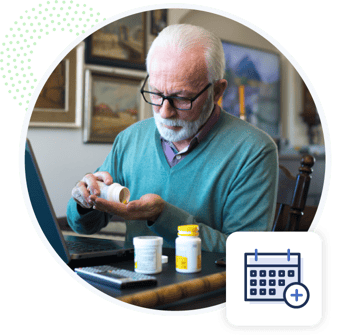
Now that we’ve covered how to put together a plan, medication management services, and goals for your organization, what’s left is improving the medication management process as a whole. Here are a few tips for strengthening various elements of the process.
The medication management process includes initial and ongoing medication review to address safety and adherence concerns, reduce adverse drug events, educate patients, and more.

Chapter 6
Just as crucial as the software you have in place is ensuring that you train staff in safe medication management. Here are a few guidelines to follow:
“Drugs that bear a heightened risk of causing significant patient harm when they are used in error. Although mistakes may or may not be more common with these drugs, the consequences of an error are clearly more devastating to patients.”While ISMP provides a standard list of these medications, it’s a good idea to revise the list according to the medications your facility frequently uses. With this list, you can train staff about the dangers of these drugs and also teach them how to most effectively educate patients about these medications.
Improved medication management ensures that patients receive the maximum benefits from their prescriptions and organizations reduce not only admissions but also increase savings.
Here are a few tips to help patients with medication management:
While training your staff and following best practices for medication management, it’s also helpful to put tools in place to support your organization’s efforts. Consider these medication management tools:

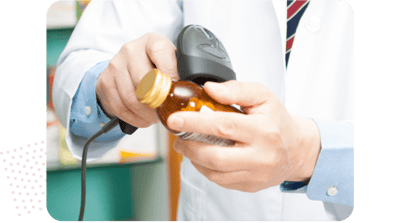




Within this eBook, we have provided you with numerous best practices and resources. Some will be easy to implement and integrate. Others will require more work and substantial coordination between various stakeholders. But all can help you develop the foundation for a successful comprehensive medication management program or take your current program to higher levels of safety, effectiveness, and quality ratings performance.
As you set out to build or strengthen your program, perform continuous monitoring and evaluation. This will help ensure that the policies and processes you implement achieve their desired results. This should also help you identify problems and inefficiencies that can be fixed and opportunities for positive changes. Engage all stakeholders — including patients and their caregivers, where applicable — for feedback on your efforts and suggestions for improvement. Even the best medication management programs have room for growth.
Finally, and perhaps most important, is to learn from every single medication error made. Mistakes happen; that is a given. What isn’t is that similar mistakes must happen again and again. That’s where the importance of a non-punitive culture comes in. With such a culture, team members are encouraged to acknowledge and raise awareness of errors, including their own. In most cases, rather than face punishment for making a mistake, staff are empowered to help assess the error and determine its root cause(s). Staff are further engaged to support efforts to strengthen systems and processes to best ensure that the same error is not repeated — by themselves or any other member of the team.
When an organization strives to learn from its shortcomings and places an emphasis on accountability and process improvement, its programs — including medication management — grow stronger by the day. And that means patient care will as well.
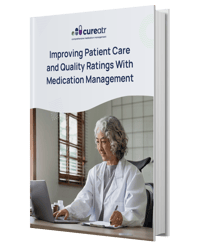
Download the PDF version.
© Cureatr 2023 | Privacy Policy
HEDIS® is a registered trademark of the National Committee for Quality Assurance (NCQA).